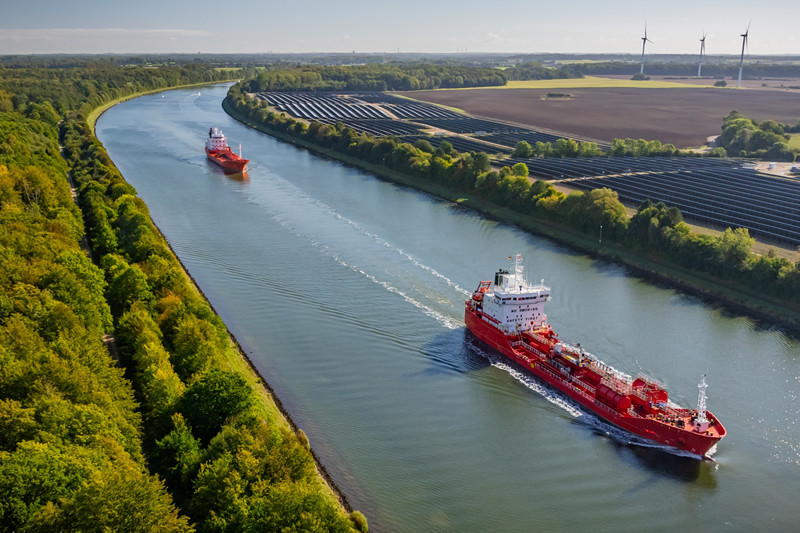Global Shipping Industry Struggles To Navigate Net Zero Transition
21
The shipping sector, responsible for 3% of global emissions, is under growing pressure to decarbonise. Upcoming International Maritime Organization (IMO) rules require shipowners to cut emissions by 65% by 2040. The EU has already extended its emissions trading scheme to shipping and introduced FuelEU Maritime, setting lifecycle GHG intensity limits.

Despite growing regulatory momentum, the path to net zero remains complex. A wide range of technologies and fuels are being explored:
- Ammonia: Fortescue's Green Pioneer is trialing ammonia as a marine fuel, but safety, infrastructure, and supply issues persist. Only 25 ammonia-capable ships are on order globally.
- Methanol: Maersk leads with dual-fuel vessels using green and e-methanol. It now operates 13 methanol-capable ships and has ordered 20 more. European and U.S. producers are scaling e-methanol production, though costs remain high.
- Biofuels: Demand is growing due to ease of adoption, but sustainability concerns loom. NGOs warn that by 2030, most marine biofuels may come from palm and soy oil, which could increase overall emissions.
- Wind-Assisted Propulsion: Technologies like rotor sails and suction wings are gaining traction. Around 50 ships use wind-assisted systems today, with 97 more on order. These can deliver fuel savings of 20%-40%.
- Operational Efficiency: Immediate gains are available through weather routing, slow steaming, and hull cleaning. Tech firms like Sofar Ocean are using real-time data to optimise voyages and cut emissions.
The Getting to Zero Coalition (a group of 200 maritime stakeholders) argues the sector must use scalable zero-emission fuels to meet 2050 targets. However, uncertainty around fuel availability, infrastructure, and regulation continues to delay investment. While some criticise the IMO’s plan as lacking ambition, industry leaders say it offers a critical signal to drive forward decarbonisation. “You can continue to pollute,” said Fortescue’s Sara Edmonson, “but delaying transition will be costly.”
According to a recent article by the Financial Times, global ocean temperatures in May 2025 reached their second-highest level on record, highlighting a concerning two-year trend of rapid marine warming. The data, sourced from the EU’s Copernicus Climate Change Service, shows the average sea surface temperature for the month was 20.79°C, just 0.14°C below the record set in May 2024.
At the same time, atmospheric CO2 levels continued to climb. Global concentrations peaked at an average of 426 parts per million (ppm) in March, up from 423ppm the previous year. For context, CO2 levels have surged from around 300ppm over the past six decades. This trend raises growing concerns about the oceans' capacity to absorb carbon dioxide and regulate the planet’s climate.
The most important gases in terms of emissions are currently sulphur oxides (SOx) and nitrogen oxides (NOx). The creation of Emission Control Areas and stringent limits on fuel sulphur content in port are challenging particularly for the shipping industry and its suppliers. Ship operators have near imminent decisions to make based on a complex set of circumstances and a fluid regulatory background. Find out more at https://www.protea.ltd.uk/marine/.
#Protea #Emissions #Monitoring #CEMS #FTIR #Gas #Analysers #Shipping #Marine #Carbon #Capture
Other Articles
Global Underground CO2 Storage Data Offers Hope Amid Rising Emissions
01
IMO Postpones Adoption Of Global Net-Zero Shipping Framework
04
Pioneering Carbon Capture Projects Ready For Construction
03
Methanol & Ammonia Deemed Ready As Zero-Emission Shipping Fuels
01
Carbon Capture Storage Reaching A Turning Point In Decarbonisation
13
CCS To Capture 15% Of Shipboard Carbon Emissions By 2050
29
Carbon Capture Surges as Economics Policy & Industry Demand Align
14
GHG Emissions At Ports On The Rise Despite Initiatives
07
Carbon Capture Utilisation & Storage In A Nutshell
30